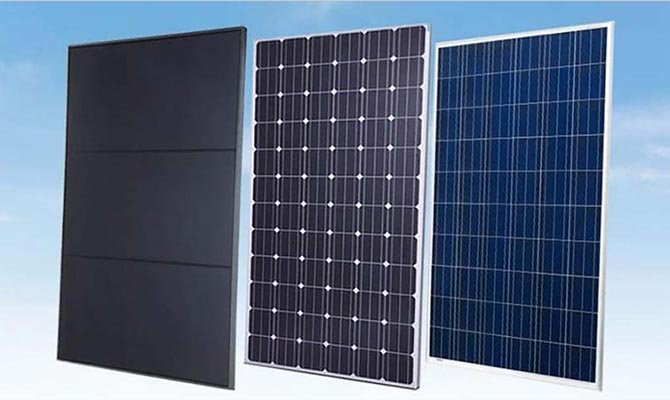- Home /
- Blog
Powered By The Sun
Solar Panel Efficiency. A Clear Picture On How To Choose The Correct Panel.

Solar Efficiency
Solar panels, although generally the same size in dimensions, are not always the same when it comes to production. Solar panels are measured by the amount of irradiation (sunlight) that converted into energy. This measurement is known as efficiency. Over the recent years, the technology of solar panels has increased creating panels conversion rates to increase. A standard size panel now averages about 370W each.
When figuring out the efficiency of a solar panel, two main factors are looked at; photovoltaic (PV) cell efficiency, which is based on cell design and type of silicon used and the overall efficiency, which is determined by cell layout, panel size and configuration.
Cells
Let’s get into more detail on what cell efficiency is. Generally speaking, there are two types of cells, P-type and N-type. The calculations, known as fill factor, is the maximum conversion of a PV cell at the optimum operating voltage and current.
The actual cell design plays a major role in the panel efficiency. Things that make the biggest differences between panels are silicon type, multiple busbars (MBB), and passivation type (PERC). These factors also play a part in the overall cost of the panel as well. The IBC cells are currently the most efficient, thanks to the high purity N-type silicon and no losses from busbar/finger shading. The IBC is 20-22% efficient. Not far behind are the current PERC mono cells, achieving over 20%.
Panels
Now that we covered cell efficiency, we move on to overall panel efficiency. To keep readings accurate, tests are performed under standard conditions. A temperature of 77 degrees Fahrenheit, solar irradiance of 1000W/m2 and Air Mass of 1.5. The efficiency is calculated by the max power rating (W) and the standard conditions, divided by the total panel area in meters.
As you probably are aware, many things can influence the overall efficiency of a panel, including temperature, cell type, sunlight, the cell interconnection, and even the color of the panel. Although a black back-sheet may be aesthetically pleasing, it actually absorbs more heat which increases the temperature of the panel and in turn slightly reduces the panel efficiency.
Panels built using advanced ‘Interdigitated back contact’ or IBC cells are the most efficient, followed by heterojunction (HJT) cells, half-cut and multi-busbar monocrystalline PERC cells, shingled cells and finally 60-cell (4-5 busbar) mono cells. 60 cell poly or multicrystalline panels are generally the least efficient are reflect with a lower cost panel.
In the last year, we have seen a surge in manufacturers creating more efficient solar panels based on N-type cells and heterojuction cells. Now, the top 10 panels all have an efficiency over 21%. The more efficient panels using the N-type cells, also have a lower induced degradation with as low as 0.3% power loss per year, which means the panels will generate 90% or more of the original rated power after 25 years.
How important is efficiency?
Efficiency is always talked about, however, a higher efficiency panel doesn’t always mean it’s a better panel. As stated earlier, a lot can change the panel efficiency. What truly matters the most is the manufacturing quality as it relates to real world performance, warranties and reliability. The more efficient a panel, the faster payback for the upfront cost will be.
All manufacturers produce a range of panels with different efficiency ratings depending on the silicon type used, multi busbar or other technologies. Very efficient panels above 21% featuring N-type cells are generally much more expensive, so if cost is a major limitation it would be better suited to locations with limited mounting space, otherwise, you can pay a premium for the same power capacity which could be achieved by using 1 or 2 additional panels. However, high-efficiency panels using N-type cells will almost always outperform and outlast panels using P-type cells due to the lower rate of degradation so the extra cost is usually worth it in the long term.
With so many options when it comes to solar panels, it is important to remember the local conditions for your area. Choose a panel that is best for your environment.